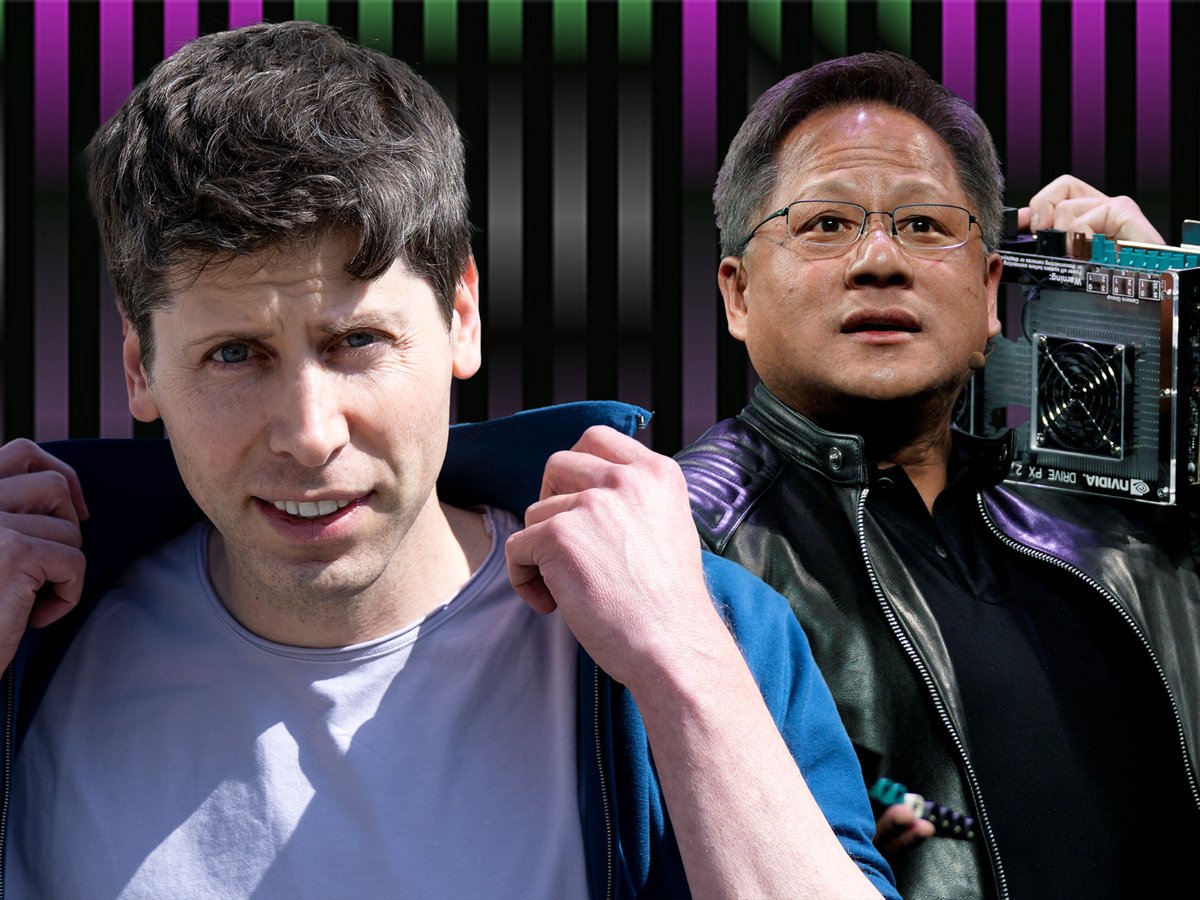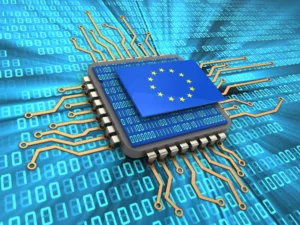Introduction:
Nvidia, a chip technology company, has recently achieved a remarkable milestone by becoming a trillion-dollar enterprise, cementing its position as the world’s newest tech giant on the back of ChatGPT revolution. Despite its relatively unknown status in the past, Nvidia is far from an out-of-the-blue startup. Established in 1993, the company has been at the forefront of chip design, catering to rapidly evolving sectors in the tech industry, including gaming, video-editing, self-driving cars, and artificial intelligence. Furthermore, Nvidia’s technology also played a significant role in the cryptocurrency boom.
Let’s figure out how AI revolution changed the game for Nvidia.
Follow us on Linkedin for everything around Semiconductors & AI
What is a GPU?
A GPU, or graphics processing unit, is a specialized processor that is designed to accelerate the processing of graphics and image data. GPUs are typically used in computers and other devices that require high-performance graphics, such as gaming consoles, workstations, and servers.
How do GPUs work?
GPUs work by performing parallel processing. This means that they can execute multiple instructions at the same time, which is ideal for the complex calculations required by graphics and image processing algorithms. GPUs are also very efficient at memory bandwidth, which is the rate at which data can be transferred between the GPU and the rest of the system.
Read more: Silicon Valley: How a Bunch of Hippies Changed the World
Why are GPUs important in the AI revolution like ChatGPT?
GPUs are becoming increasingly important in the AI revolution because they are well-suited for the complex calculations required by AI algorithms. For example, GPUs can be used to train and deploy neural networks, which are the foundation of many AI applications.
Here are some specific examples of how GPUs are being used in AI applications:
- Self-driving cars: GPUs are used to power the computer vision systems that allow self-driving cars to see and navigate the world around them.
- Facial recognition: GPUs are used to power the facial recognition systems that are used in security applications, such as airport security and retail.
- Natural language processing: GPUs are used to power the natural language processing systems that are used in a wide range of applications, such as chatbots, machine translation, and search.
As AI becomes more widespread, GPUs will become even more important. This is because AI algorithms are becoming increasingly complex, and GPUs are the only type of processor that can efficiently handle these calculations. As a result, the demand for GPUs is expected to grow significantly in the years to come.
How Nvidia hit the gold mine with AI revolution ?
Nvidia hit the gold mine with the AI revolution in a few key ways:
- They were early to the game. Nvidia started developing GPUs for AI applications in the early 2000s, when most other companies were still focused on gaming and graphics. This gave them a head start in terms of expertise and market share.
- Their GPUs are well-suited for AI. GPUs are designed to perform parallel processing, which is ideal for the complex calculations required by AI algorithms. Nvidia’s GPUs are particularly efficient at this, which gives them a performance advantage over other types of chips.
- They have a strong ecosystem of partners. Nvidia has built a strong ecosystem of partners, including software developers, cloud providers, and system integrators. This ecosystem helps to ensure that Nvidia’s GPUs are widely available and that there are a wide range of resources available to help developers build AI applications.
As a result of these factors, Nvidia has become the dominant player in the AI chip market. They have a market share of over 95% in the data center GPU market, and their chips are used in a wide range of AI applications, including self-driving cars, facial recognition, and natural language processing.
The AI revolution is still in its early stages, but it is clear that Nvidia is well-positioned to benefit from it. As AI becomes more widespread, Nvidia’s GPUs will be in high demand. This is likely to drive continued growth for the company in the years to come.
Read More: Understanding Parallel Processing: A Tale of Nvidia vs Intel
How ChatGPT(Open AI) used NVIDIA ?
ChatGPT is a large language model (LLM) chatbot developed by OpenAI. It was trained on a massive dataset of text and code, and it can generate human-like text in response to a wide range of prompts and questions.
ChatGPT uses NVIDIA GPUs to train and run. The training process involves a massive amount of computation, and GPUs are well-suited for this type of workload. GPUs can perform parallel processing, which means that they can execute multiple instructions at the same time. This is ideal for the complex calculations required to train LLMs.
In addition to training, ChatGPT also uses GPUs to run. When a user interacts with ChatGPT, the model needs to generate text in response to the user’s input. This process also requires a lot of computation, and GPUs are able to handle this workload efficiently.
The use of NVIDIA GPUs has allowed ChatGPT to achieve a high level of performance. ChatGPT is able to generate human-like text that is often indistinguishable from human-written text. This makes ChatGPT a valuable tool for a variety of applications, such as customer service, education, and entertainment.
Here are some specific details about how ChatGPT uses NVIDIA GPUs:
- The training process for ChatGPT involved using 10,000 NVIDIA GPUs.
- ChatGPT can run on a single GPU, but it can also be scaled to run on multiple GPUs.
- The use of NVIDIA GPUs has allowed ChatGPT to achieve a latency of less than 100 milliseconds.
Overall, the use of NVIDIA GPUs has been essential to the development and success of ChatGPT. GPUs have allowed ChatGPT to achieve a high level of performance and scalability, which makes it a valuable tool for a variety of applications.
How did ChatGPT news change NVIDIA share price?
The news that ChatGPT was using NVIDIA GPUs to train and run caused NVIDIA’s share price to surge. In the pre-market trading on the day the news was released, NVIDIA’s share price increased by over 26%. This was due to the fact that investors were bullish on the prospects of NVIDIA’s GPUs in the generative AI market.
ChatGPT using NVIDIA GPUs validated NVIDIA as an AI chip market leader. ChatGPT, a top LLM, demonstrated NVIDIA chips’ ability to handle complex calculations for training and running LLMs.
This news also raised expectations for the future of generative AI. ChatGPT is just one example of the many potential applications of generative AI. As generative AI technology continues to develop, the demand for NVIDIA GPUs is likely to grow. This could lead to further gains for NVIDIA’s share price in the years to come.
Here are some specific details about how the news changed NVIDIA share:
- On the day the news was released, NVIDIA’s share price opened at $225.00.
- By the end of the day, NVIDIA’s share price had closed at $285.00.
- This represented a gain of over 26% for the day.
- The news also caused NVIDIA’s market capitalization to increase by over $100 billion.
Overall, the news that ChatGPT was using NVIDIA GPUs was a positive development for the company. It showed that NVIDIA’s GPUs are capable of handling the complex calculations required to train and run LLMs, and it raised expectations for the future of generative AI. This could lead to further gains for NVIDIA’s share price in the years to come.
Conclusion:
The news of ChatGPT using NVIDIA GPUs was a positive development, showcasing their capacity for complex AI calculations and boosting expectations for generative AI’s future. This could drive NVIDIA’s share price higher.
NVIDIA’s GPUs power AI revolution, and as AI spreads, the demand for GPUs is set to rise, benefiting NVIDIA as a leading GPU supplier for AI.







